Pirarucú
What really sets Pirarucú apart from other destinations is its namesake - “The Arapaima”. Pirarucú is the Guarani and Portuguese name for the arapaima, which also means the red fish in the indigenous language. Pirarucu (Arapaima gigas) is an air-breathing, prehistoric creature, endemic to the Amazon Basin. Because it is a representative of one of the oldest fish lineages in the world, you can expect incredible fighting abilities and unprecedented power.
Sizes
Arapaima can grow to over 400 pounds and closely resemble a freshwater tarpon. It has an incredibly rapid growth rate and impressive size, typically reaching 3 feet and 20 pounds in their first year, and five feet and 90 pounds by their fourth year, when they become sexually mature. The fish can acquire a size of about 3 meters and 500 pounds in weight. With fish this large, it is easy to see them rolling in front of you - there is no mistaking them at the Mamirauá Reserve.
Air Breathers
The fish are often seen gulping air from the surface, thus offering sight casting to singles, pairs, or even schools of fish. Arapaima are a very resilient fish out of water that take up to 70% of the oxygen they need to live from the air. They usually make a large surface disturbance when they breathe and frequently make a loud noise when they capture prey at the surface. Arapaima are capable of surviving in stagnant water bodies with low dissolved oxygen andin a wide range of aquatic habitats.
Feeding Behavior
Arapaima primarily prey on crustaceans and fish. However, this predator is opportunistic and may consume a variety of invertebrate and vertebrate species due to their large mouths. They have been known to leap out of the water to capture prey in their native range. When hooked, they explode in aerial displays, take off on long runs and surrender only after lengthy battles.
Fish Biology
They have a streamlined, oval shape with a large, flattened head. Their body is covered by very large scales that are generally gray to green in color but many scales towards the tail have red markings. Arapaima can spawn at 4-5 years of age. A female can lay 10,000 to 20,000 eggs in a nest dug in sandy sediments and males will protect the young for up to three months.
If you want to read more about the travel, logistics, gear of this incredible experience, check out our travel planner.

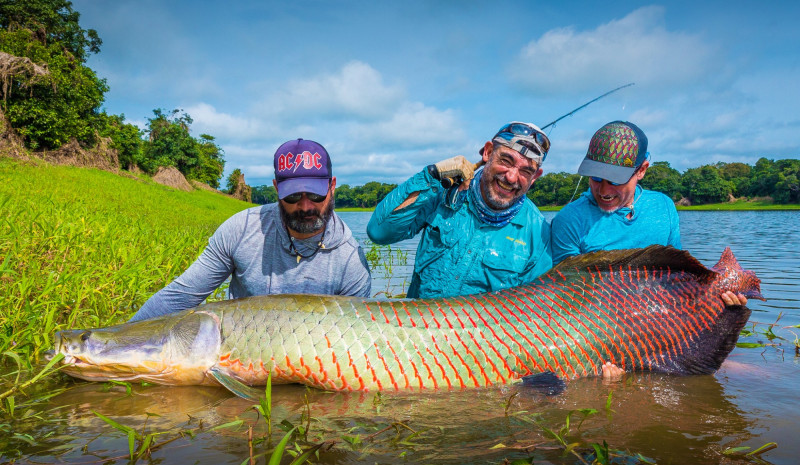

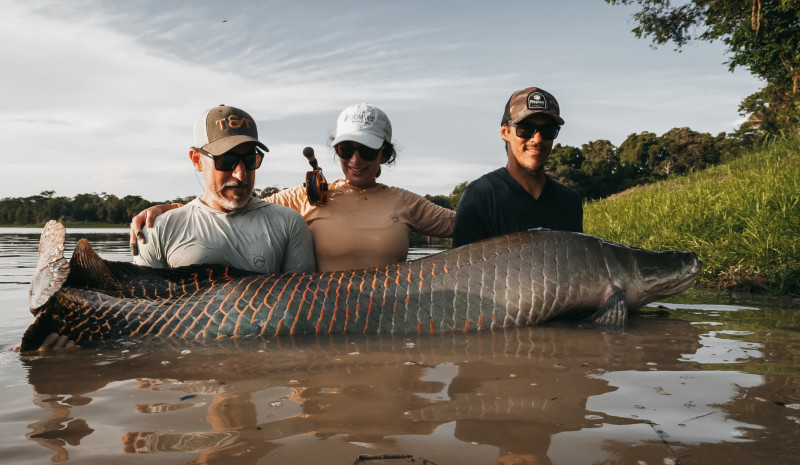



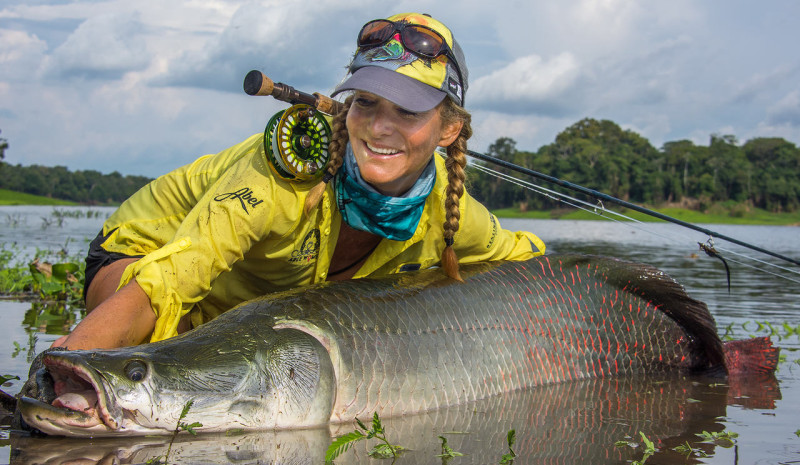


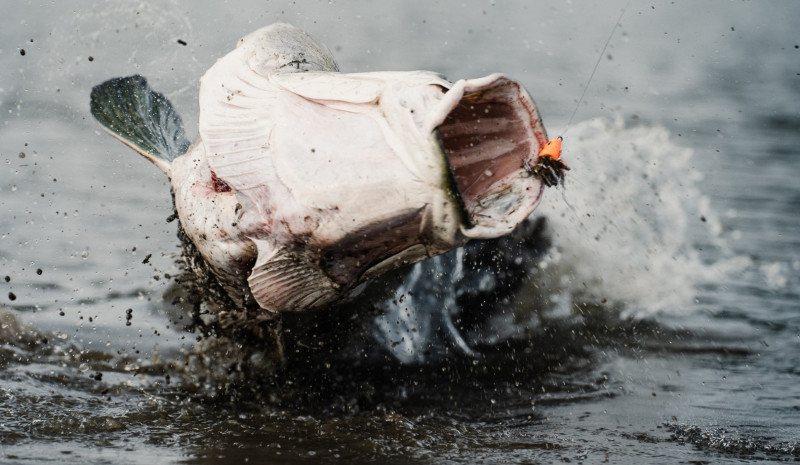

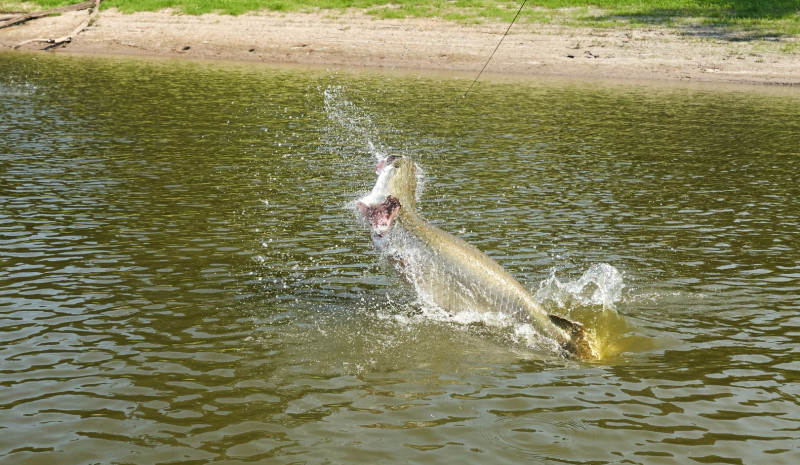
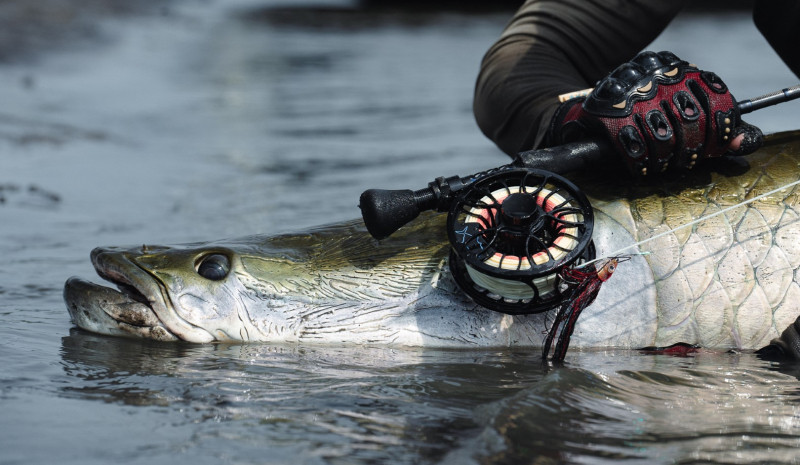
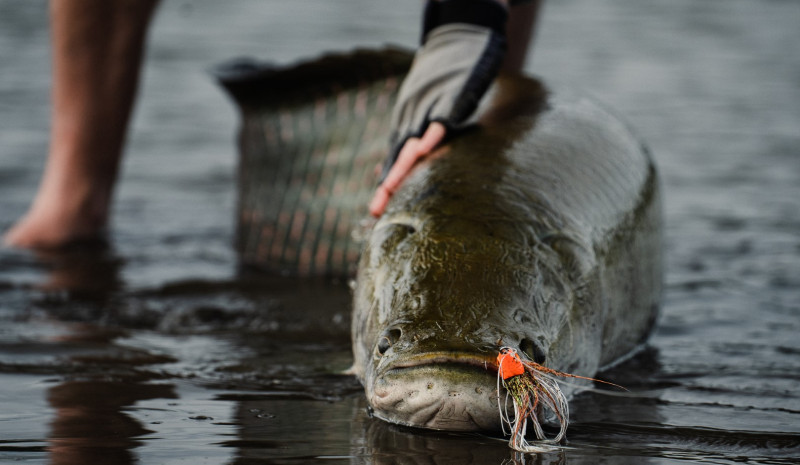

 pirarucuflyfish
pirarucuflyfish